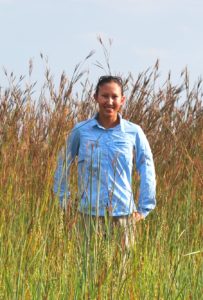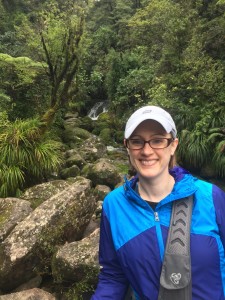
Kim Komatsu stands in a grassland at Konza Prairie Biological Station, in Manhattan, Kansas.
(Credit: Cynthia Chang)
by Kim Komatsu,
ecosystem conservation ecologist
One of the unexpected perks of my life as a scientist has been the opportunity to travel for work. As a grassland ecologist, my studies have taken me to South Africa and Tanzania to investigate the roles of fire, grazing, and nutrient availability in determining plant growth and species diversity. In these exotic field sites, I would drive by impalas, zebras, elephants, giraffes, cheetahs, lions, and leopards before arriving at my experimental plots. Then I would spend my day working in the hot sun to survey the plant communities in my plots, all the while guarded by a park ranger with a loaded rifle to protect me from the very animals I marveled at on the way to the field site. (Thankfully those rifles were never fired during my trips.) With grasslands all over the world, I have many more grassland types on my research wish list, including the Mongolian steppes, the Pampas of South America, the Cerrado of Brazil, and the rangelands of Australia and Europe. Click to continue »


